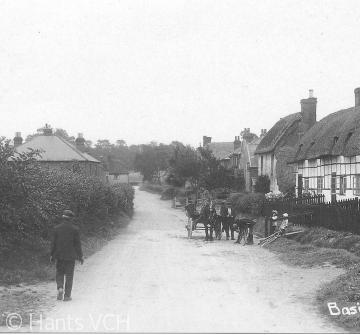Congregationalism in Old Basing: Pyotts Hill Chapel c.1868-1943

It is not known exactly when the Congregational cause in the parish of Old Basing was instituted, but it was already in existence at the time of the 1851 Census of Religious Worship. The census return records that the Independents (Congregationalists) of the parish worshipped at Cottage House, Basing, which was described as a ‘Dwelling House’ that was ‘not used exclusively for worship’. Fifty were present at the afternoon service on the day of the census.
Some years after the census, a permanent place of worship was constructed in the Pyotts Hill district of the parish. However, there is some uncertainty as to the year in which this occurred. According to White’s Directory of Hampshire it was 1868, and in the records of the Hampshire Congregational Union, 1872. It cost £200 and could accommodate 100.
By the early years of the twentieth century the chapel was described as having ‘good congregations and an all-alive appearance’. There was an afternoon and evening service every Sunday and ‘a midweek preaching service.’ It also had a ‘flourishing’ Sunday school; a branch of the Band of Hope; and a well regarded choir. In 1912 the premises were renovated by voluntary effort and in 1914 an additional room was added to the chapel to facilitate its provision for young men.
Initially the outbreak of War did not adversely affect the situation beyond making it more difficult for preachers to get to the chapel due to petrol shortages. Nonetheless, a service was held every Sunday until the winter of 1941 when it was decided to suspend services for three months, a sign that all was not well. That said, following their suspension services were resumed with a statement being made that there was no intention of permanent closure. However, by mid-1943 it was clear that with dwindling numbers this was to be the ultimate fate of the chapel. Accordingly, as Revd Wilfrid Salmon, London Street’s minister, regretfully pointed out after 71 years it was necessary to close the chapel with the last service being held in September 1943. At the time it was felt that the Methodist Church in the centre of the village was in a better position to meet Free Church needs. The Congregational chapel building was subsequently used as a warehouse and in the mid-1950s converted into residential accommodation, which continues to be the position in 2015.
Content derived from research undertaken as part of the Victoria County History project
Content derived from research undertaken as part of the Victoria County History project



